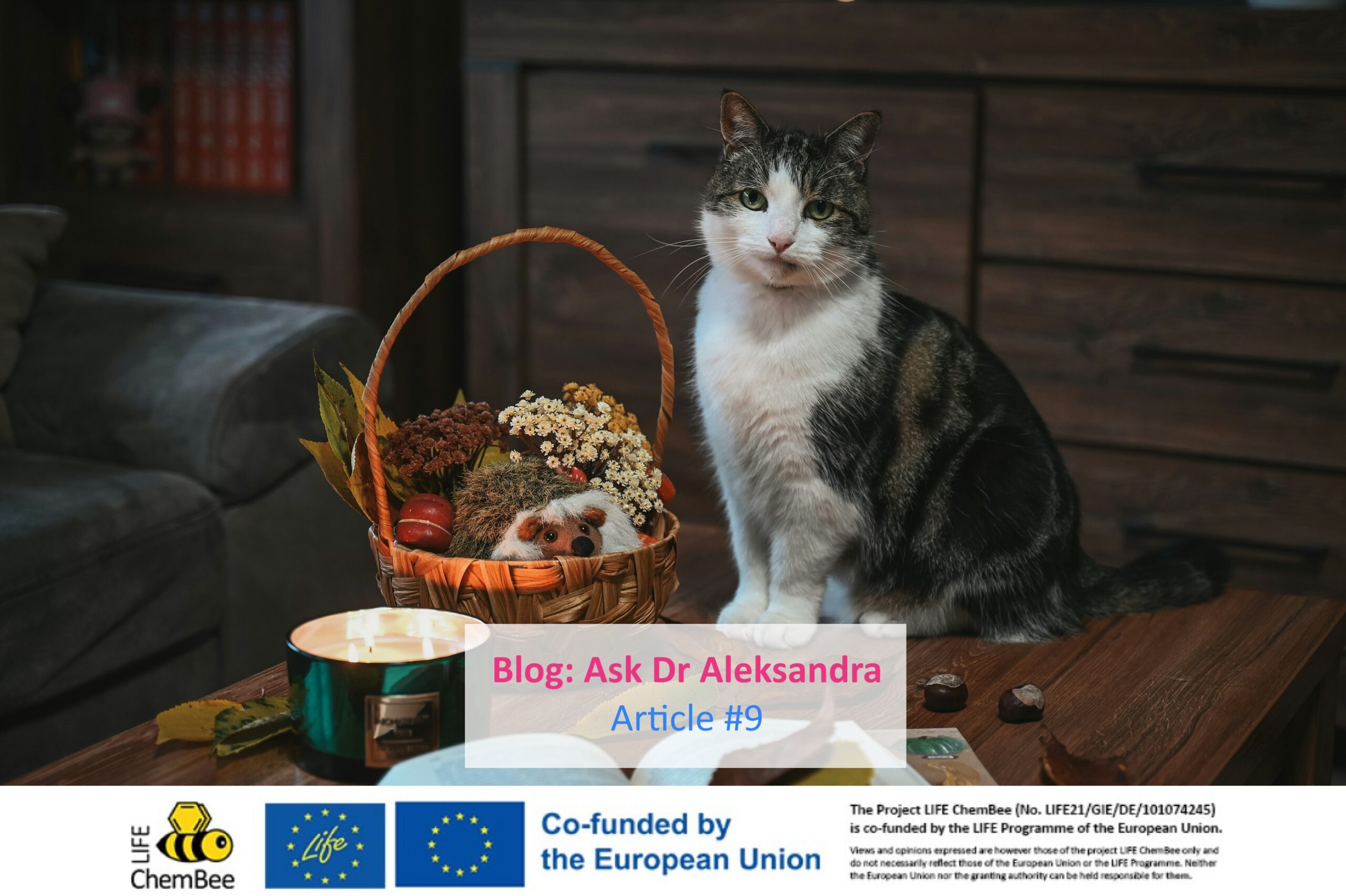
Autumn brings a special kind of calm. Mornings smell of rain and cinnamon tea with a slice of orange and lemon and a spoonful of golden honey. Evenings glow with candlelight and your dog curls up by your feet while the cat claims the warmest spot on the couch.
It feels safe. Peaceful.
But beneath that cosy surface, our homes can quietly fill with invisible guests in the form of chemicals that disrupt our hormones and affect our pets’ health, too. They drift in from scented candles, cleaning sprays and old foam from furniture. They lurk in our pets’ toys and bowls, in the dust we vacuum up every week and in the air we share.
And, just like us, our pets can feel their effects.
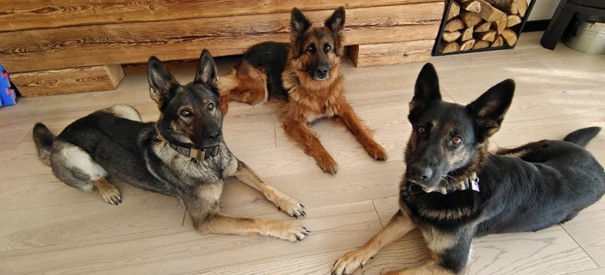
Pets as environmental sentinels
When I first started learning about things that disrupt hormones, I didn’t expect my own pets to become part of the story. But the more I read the data, the clearer it became: cats and dogs are like bioindicators of what’s happening in our homes.
Studies have found that cats exposed to dust containing brominated flame retardants show higher rates of thyroid disorders. Dogs that chew on soft PVC toys can absorb chemicals called phthalates and bisphenols through their mouths. Even the plastic inside pet food cans can transfer chemicals into their food. These findings are similar to those seen in human research, but they often appear in animals first because their bodies are smaller and they are exposed for longer.
Our pets aren’t just companions. They are early-warning systems, quietly showing us what’s happening in the environment we share. What we choose to do every day can affect their health, how well they live, and how long they live for.
The “Big Five” hidden dangers of autumn
Each season has its own beauty — and its own chemistry. In autumn, when we close our windows, light candles, and bring out the blankets, the air inside becomes a laboratory of reactions.
Here are the “Big Five” indoor culprits that sneak into our cozy routines:
- Phthalates and Bisphenols (BPA, BPS) – found in soft plastics, vinyl flooring, and scented products.
- PFAS (“forever chemicals”) – can be found in grease-resistant packaging, waterproof coats, and pet mats.
- Flame retardants (PBDEs, OPEs) – found in older sofas, cushions, and electronics.
- Synthetic musks and UV stabilizers – can be found in perfumes, candles, and cleaning sprays.
- Quaternary ammonium compounds and phenols – can be found in disinfectants and some pet shampoos.
They linger in dust, stick to fabrics, and circulate in the air. Pets spend most of their time closer to the floor, breathing, licking and grooming. This means they are often exposed to higher doses than us.

The candle paradox
There’s nothing more comforting than the flicker of a candle on a rainy, cold, and dark autumn evening. But many scented candles and diffusers release complex volatile compounds, including phthalates and synthetic musks. Cats, in particular, metabolize these substances poorly, which means what smells “warm and relaxing” to us can stress their respiratory and liver systems.
Solution: Choose unscented beeswax or soy candles, and light them sparingly with a window slightly open. Skip reed diffusers and aerosol sprays. Bring some natural elements into your home, like pine branches, oranges studded with cloves, or fresh flowers. They smell better than any synthetic blend. Be careful when using natural essential oils, as cats and birds can be harmed by them if they are breathed in, and they can cause severe health problems.
Cleaning habits and pets
We often think of the smell of disinfectant as a sign of cleanliness. But phenols and quats — common in disinfectants and antibacterial wipes — can irritate skin, lungs, and hormone systems. Pets walk on freshly cleaned floors, lick their paws, and absorb residues directly. A week-long study among women who switched to “green” cleaning products showed a measurable drop in indoor air pollutants — benzene, chloroform, and other volatile chemicals. If that’s what one week does for us humans, just imagine how much better it will be for the dog who naps on that floor every day.
Solution: Use EDC-free detergents, damp-dust instead of dry wiping, and mop with plain water or a mild vinegar solution. Vacuum with a HEPA filter and air the house after cleaning.
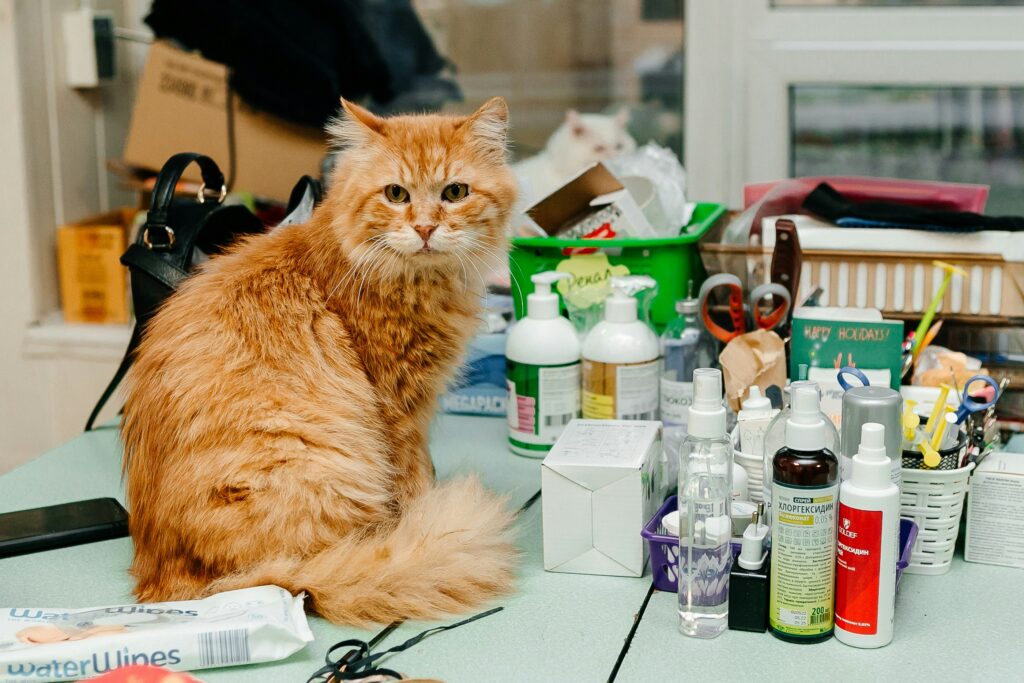
The bedtime story no one told you
Pets spend up to 16 hours a day asleep. This means that their beds — and yours — matter more than we think. Old polyurethane foams and some textiles release flame retardants and microplastics that build up in dust. Research shows that these can cause thyroid problems in cats and metabolic issues in humans.
Solution: Choose beds made from organic cotton, wool, or low-VOC foam. Wash all new textiles before use, vacuum under furniture, and let bedding air out in the sun whenever possible. You’re not just making the bed; you’re creating a safer environment for every heart that beats in your home.
The chewable dilemma
If you’ve ever watched your dog proudly destroy a new toy in five minutes, you know the joy on their face. But soft, flexible plastics — especially those with that “new plastic” smell — often contain phthalates and bisphenols that leach out when chewed or heated.
Solution: Choose natural rubber, cotton ropes, or stainless steel balls (for cats only). Look for labels that say “non-toxic” or “suitable for children under 3 years old”. If it’s safe for a toddler, it’s safe for your dog. Turn playtime into an act of care — protect your pet’s hormones with every toss of the ball.

The invisible dust trap
If I could give one practical tip for every home, it would be this: respect the dust. It might seem like harmless fluff, but it often contains old flame retardants, phthalates, bisphenols and PFAS particles that can come from furniture, electronics and flooring. Pets breathe in or lick this dust while grooming, which means they are exposed to chemicals more quickly than we are.
Solution:
- Vacuum with HEPA filters at least twice a week. The best option is to do it every day.
- Make sure you clean the corners, vents and the area behind electronics.
- Use a wet cloth to wipe down surfaces. Dry dusting only spreads it around.
- Wash pet blankets regularly at high temperatures.
The PFAS problem in pet food
PFAS, also known as “forever chemicals”, are often used in pet food packaging to stop grease from sticking. But they don’t stay there. They get into the food supply and build up in the body, affecting fertility, immunity, and metabolism. Even tinned food can be a source of exposure. In my own research, when people replaced canned food with fresh alternatives for just one week, this significantly lowered the levels of BPA in their blood.
Solution: Buy dry food in bulk and put it into stainless steel or glass containers. Wash the bowls every day with hot water. Avoid scratched plastic and “stain-proof” mats. You will reduce daily chemical intake — one meal at a time — and protect the most loyal stomachs in the house.
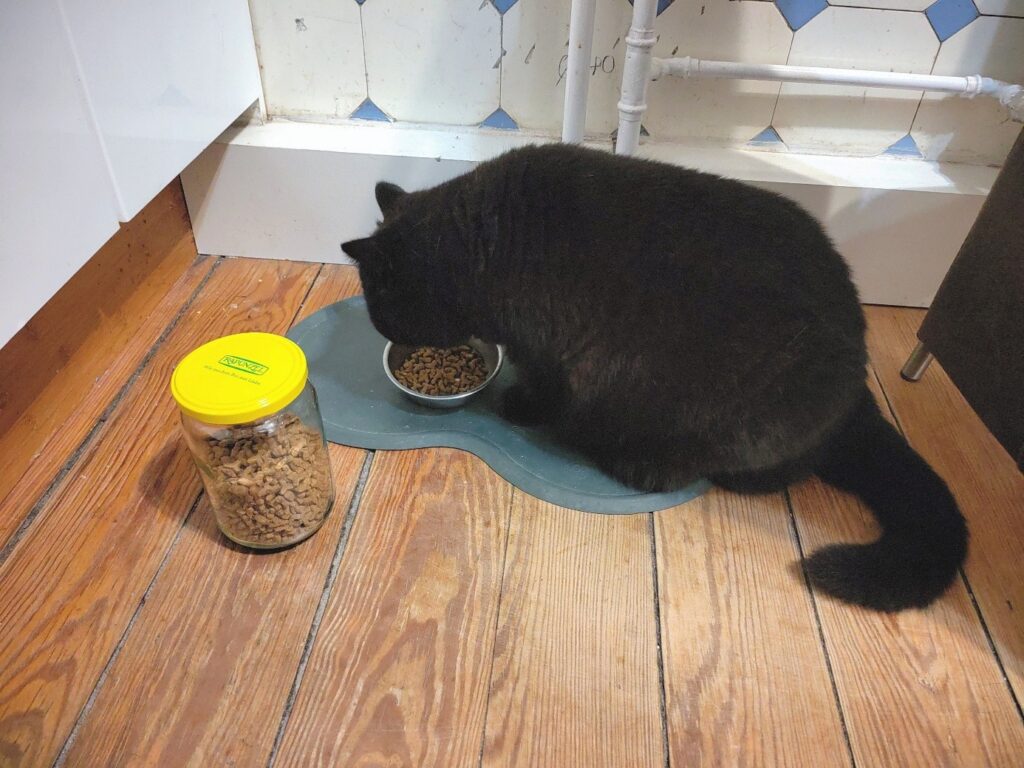
A cozy home without compromise
Creating a toxin-free home isn’t about fear — it’s about empowerment. It’s about understanding that warmth and wellness can coexist, that you don’t need synthetic scents to feel comforted, and that your pet’s safety begins with the choices you make each day.
Start small – by swapping one candle, one cleaning item or one conscious purchase. These small decisions can have a big impact over time. You and your pets will start to feel better within a few weeks.
Because the truth is, the most nurturing home is the one that supports life — not chemistry.
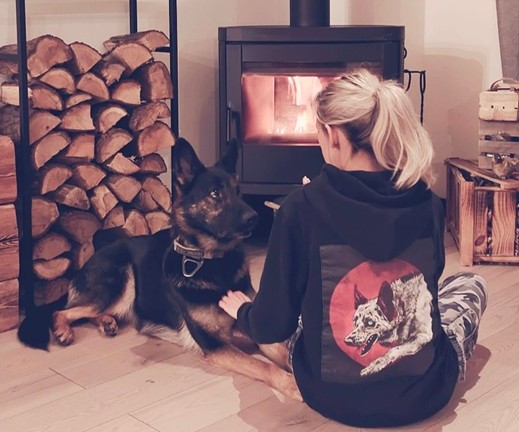
From science to action: The CheckED App and One Health (WHO)
All these changes can feel overwhelming, I know. That’s why we created the CheckED App — a science-based guide that helps you track and reduce your everyday exposure to harmful chemicals. I have spent 20 years in science. Now, I have used my skills to create a simple online tool that can help you make better choices every day and live healthier. It shows you what’s in the food you’re eating, suggests safer alternatives, and puts research into action — one product, one decision, one healthier day at a time.
It’s part of a bigger vision called One Health — the idea that human health, animal health, and environmental health are inseparable. When you make your home safer for your pet, you make it safer for yourself. When you choose eco-friendly cleaning, you help to protect our rivers and soil. Saying no to things that disrupt hormones protects the environment we all share. Wild animals, not just our pets, are also our neighbors. I’m also doing this for them!
In the end
I’m writing this while my dogs are asleep next to me, breathing gently after a long walk (well, to be honest, three or four walks, because the youngest one still wants to play). Outside, the leaves are turning gold. Inside, the air is filled with the smell of coffee and freshly baked apple pie. The windows are open a little. This is what “cozy” really means — not a fragrance or a candle, but the quiet certainty that everyone under your roof, fur and skin alike, is safe.
This is the kind of home that science and love can create.
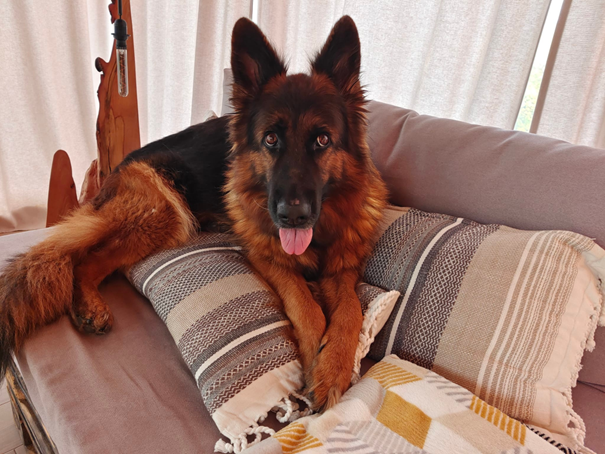
If you have any questions or need more information, please write to Dr Aleksandra at askdraleksandra@detoxed.eu or contact us directly via Instagram @AskDrAleksandra.
Image credits / source: unsplash.com and private storage
Scientifically proven studies:
Pocar P, Grieco V, Aidos L, Borromeo V. Endocrine-Disrupting Chemicals and Their Effects in Pet Dogs and Cats: An Overview. Animals (Basel). 2023 Jan 22;13(3):378
Darbre PD. Overview of air pollution and endocrine disorders. Int J Gen Med. 2018 May 23;11:191-207.
Toxicoses From Essential Oils in Animals By Kia Benson, DVM, Pet Poison Helpline & SafetyCall International, LLC, Bloomington, MN, Reviewed/Revised Mar 2025
Wooten KJ, Smith PN. Canine toys and training devices as sources of exposure to phthalates and bisphenol A: quantitation of chemicals in leachate and in vitro screening for endocrine activity. Chemosphere. 2013 Nov;93(10):2245-53
Mensching DA, Slater M, Scott JW, Ferguson DC, Beasley VR. The feline thyroid gland: a model for endocrine disruption by polybrominated diphenyl ethers (PBDEs)? J Toxicol Environ Health A. 2012;75(4):201-12.

